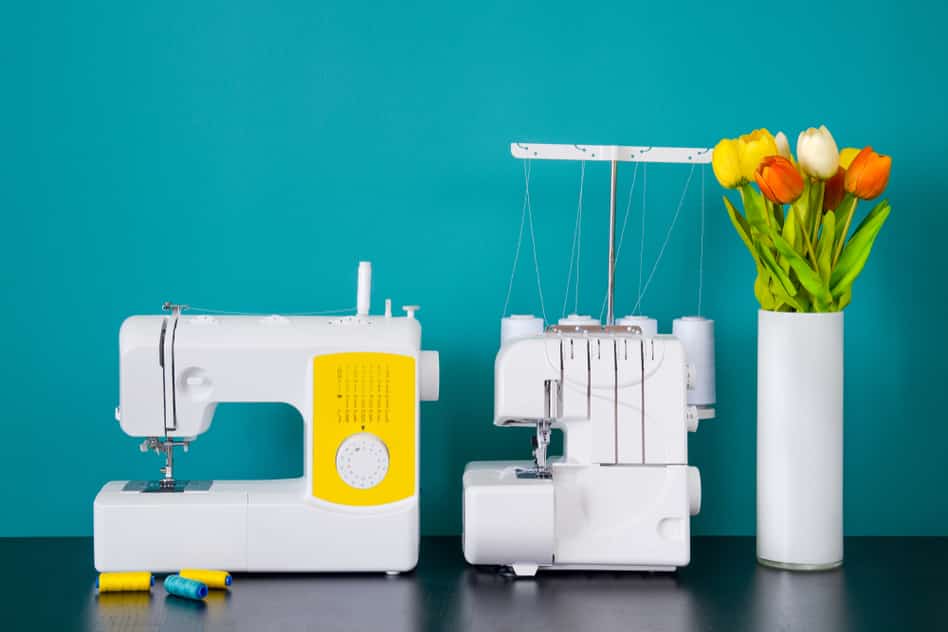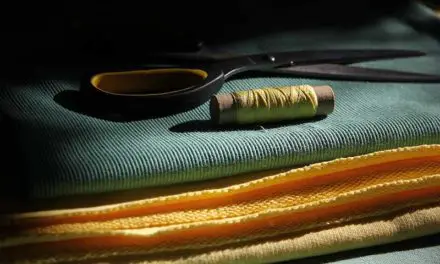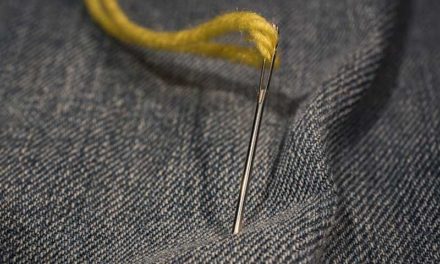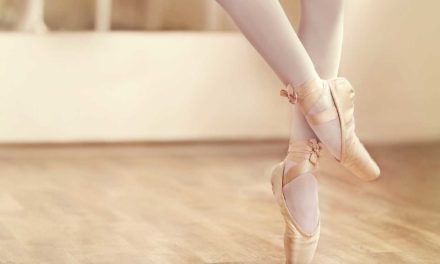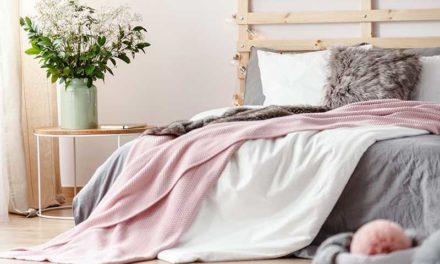Table of Contents
How a Sewing Machine Works
Since Elias Howe invented the sewing machine in the 1880’s and Singer perfected it for the home market, the basic principles remain the same. One thread is the top thread, which comes from a spool pin through some guide eyes, then through the hole in the take- up lever.
The same thread then moves through some tension guides, before it eventually threads through the eye of the sewing machine needle. The energy generated by the sewing machine motor is transferred to the handwheel, which in turn moves the take-up lever up and down.
A wound bobbin is put into the bobbin case and situated correctly in the machine. As the take-up lever moves forward, the threaded needle engages the thread in the wound bobbin, so that each stitch is completed.
The basic parameters of the sewing machine are similar, whether it is your grandmother’s treadle machine, your mother’s 80s model, your friend Pat’s expensive electronic Bernina, or your basic lightweight model.
How a Serger Works
Like a sewing machine, a serger has an upper threading and a bobbin threading. Where a sewing machine usually has one spool pin at the top and one bobbin thread in the bottom, a serger can have up to 8 different cones of thread going through the same needle, and one bobbin.
Each cone of thread has its own take-up lever and tension knobs. Most sewists only use 3 or 4 at a time, however. With all the threads going through the machine, machine speeds can range from between 1300-1500 stitches per inch, blindingly fast.
The serger can trim, sew, and finish a seam in one step.
The Sewing Machine … For Better or Worse
With an average sewing machine, the home sewist can mend clothing and do minor alterations. One can make basic garments, as well as household items and decor.
More complex sewing machines have a variety of stitch options, and those stitch options can include embroidery or embellishment.
Oh! What a Serger Can Do
With a serger, even a beginner can construct simple garments from knit fabrics that look like they were professionally created. This is because the serger trims, sews seams, and finishes them automatically in one step.
In addition, the serger moves at warp speed, so if Sewist A starts a seam on a garment at a sewing machine, and Sewist B cuts out a garment from a similar pattern and starts a similar seam on a serger, Sewist B will leave Sewist A in the dust almost every time. (That is, unless Sewist B breaks a needle, or the thread tangles, so the upper threading becomes seriously undone. Then Sewist A will plod along with one needle and eventually finish the garment.)
Serger machines also have some beautiful stitching effects as basic features. A stitch made with five different colors of thread from five different cones can be sewed in a single step on a serger.
To achieve a similar effect with a sewing machine, a sewist would have to go over the same seam five different times, threading and unthreading five different colors of thread.
There are many different variations on trimming, sewing and finishing a seam in one step which can enable a beginning sewist to achieve gorgeous results.
Most sergers have edge-stitch features that allow a designer to make perfect rolled hems with ease, right at the edge of the fabric, so sergers save time and money.
Meanwhile, Back at the Sewing Machine
While a serger may be blindingly fast, sometimes blindingly fast is not what is needed, if the sewist needs to pay close attention to garment details. Most sergers do not do zippers, attach buttons, or make buttonholes.
Some are advertised with these capabilities, but at that speed and in the close quarters of a serger bed, it would take less time to use a sewing machine than to rip out a serged zipper. The last thing any sewist would want would be half the zipper trimmed off the garment back.
If you are a sewist who likes to do machine embroidery, the sewing machine wins hands down. While it’s possible to piece a quilt top using a serger machine if the individual seams were long enough, it is much better on the sewing machine, and a serger does not quilt.
The machine only sews forward and backward, there’s never enough room in a serger bed. By lowering the feed dogs on a domestic sewing machine, the sewist can quilt all sorts of designs almost as easily as on a longarm machine.
Best Projects for a Serger Machine
A serger is an industrial machine adapted for home use, so any type of home décor or linens with long lengths of seaming could be accomplished more quickly and easily using a serger.
Think curtains, slipcovers, draperies, bed linens, even gifts such as dishcloths or towels using simple embellishment. Sergers sew through different weights of fabric without hesitation. The rolled hem feature would be invaluable.
As far as clothing construction, simple knit garments for men, women, and children are quick and easy.
Attaching layers of tulle to a bridal gown, hemming veils and trains, sewing costumes for Halloween or Cosplay with specialty fabrics, making bathing suits, dance team, or exercise clothing would be quick and easy.
Best Projects for a Sewing Machine
Any type of clothing construction or home décor that involved a lot of small, intricate piecing or pattern parts would be more easily done on the sewing machine. Small pieces of fabric on the sewing machine take time, attention, and control.
Garments with buttonholes, and any quilting or machine embroidery project, especially if it involves lowering feed dogs or using an embroidery hoop underneath the machine needle.
A Serious Sewist Might Need Both
People who sew for a living, such as seamsters, designers, and costumers might find themselves using a serger to join seams and finish hems but put in zippers, buttonholes, and machine embroidery with the sewing machine.
It’s all in what works best for the fabric, the item, and the sewist.

